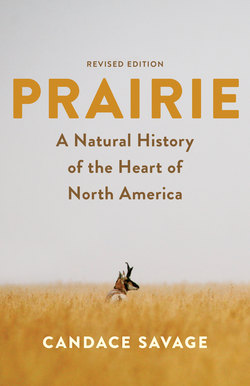Prairie

Реклама. ООО «ЛитРес», ИНН: 7719571260.
Оглавление
Candace Savage. Prairie
Отрывок из книги
CONTENTS
PREFACE
.....
If water has cut into these landscapes, wind has smoothed them out. For example, the southeastern edge of the Platte River valley is softened by a broad belt of curving, undulating sand dunes that were deposited by dust storms sometime during the Ice Age. Similar formations, shaped by similar forces, are also to be found strewn up and down the drier, western side of the Great Plains, from the Great Sandhills of southwestern Saskatchewan in the north to the Mescalero Sands of the Pecos Valley. And right in the middle of the map lies one of the prairies’ little-known natural wonders—the Nebraska Sandhills, a region of whale-backed, grassy rises and prairie wetlands that, at an area of almost 24,000 square miles (61,000 square kilometers), ranks as the largest field of sand dunes in the Western Hemisphere. These sandscapes were put in place by the relentless northwest winds that have been coursing across the landscape for millions of years.
With so few barriers to stand in their way, these same winds have had the run of the entire Great Plains region. Although their influence can be seen in many parts of the country—for example, as ridges of windblown silt along both the South Saskatchewan and Upper Missouri rivers—their influence is most obvious in the eastern and southern regions of the Great Plains. These include not only areas of the Colorado Piedmont and the High Plains but also the “low plains” to the east, notably the rolling hills of the Plains Border country, the Osage Plains, and the Glaciated Central Lowlands. Much of this sweep of country is blanketed in deep, contoured drifts of fine silt, or loess—pronounced “luss”—another gritty, wind-borne by-product of glaciation. The result is a gently undulating landscape of soft, rolling hills and, in places, extraordinary bluffs, like the delightfully eroded and unexpected Loess Hills of western Iowa.
.....